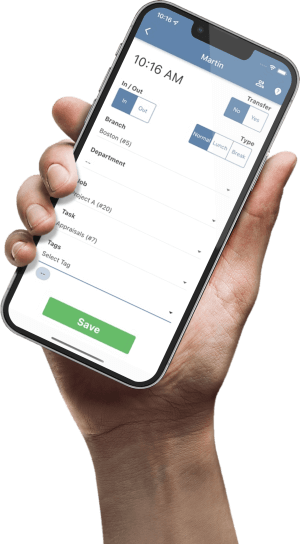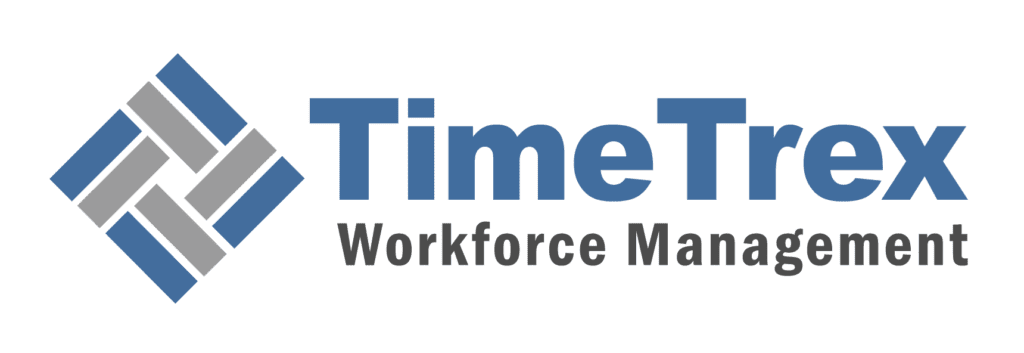Free Interactive Employee Schedule Builder
Employee Schedule
Drag & drop employees to assign shifts.
Found our Free Interactive Employee Schedule Builder useful? Bookmark and share it.
Blueprint for Modern Employee Scheduling
Creating an employee schedule is a core strategic function for any US manager, directly impacting operational efficiency, labor costs, and employee morale. An effective employee scheduling process ensures you have the right people, with the right skills, in the right place at the right time. This guide provides a detailed blueprint for mastering modern employee scheduling, from initial analysis and legal compliance to leveraging powerful scheduling software to build a resilient and engaged workforce.
TL:DR
Effective employee scheduling is a strategic balancing act between operational needs, cost control, and employee satisfaction. It starts with a data-driven analysis of business demand and workforce capabilities. Choosing the right scheduling model—fixed, rotating, or flexible—is crucial and depends on your industry. A structured, five-step process involving building templates, data-informed shift assignment, rigorous review, clear communication, and adaptable change management is key. US managers must navigate a complex web of laws, especially the FLSA and emerging "Fair Workweek" ordinances, making scheduling software with built-in compliance engines essential. The right technology automates tedious tasks, empowers employees with self-service options, and transforms scheduling from a reactive chore into a strategic advantage.
Article Index
- The Strategic Imperative of Employee Scheduling
- Pre-Scheduling Analysis: The Foundation of an Effective Schedule
- A Comparative Analysis of Scheduling Models
- The End-to-End Scheduling Process: A Practical Guide
- Navigating the Legal and Compliance Landscape
- Leveraging Technology for Scheduling Excellence
- Advanced Strategies and Recommendations
The Strategic Imperative of Employee Scheduling
Employee scheduling has evolved far beyond its administrative origins as a simple task of filling time slots on a calendar. In the modern business landscape, it stands as a core strategic function with a direct and profound impact on operational efficiency, financial performance, and human capital management. The process represents a complex balancing act, a systematic method of planning and managing work hours that must strategically align a company's most valuable—and often most expensive—resource, its people, with overarching organizational goals. This requires a nuanced approach that considers a multitude of interlocking variables: from employee availability, skills, certifications, and pay rates to fluctuating business demands, labor budgets, and a complex web of legal regulations. The ultimate objective is to achieve a state of operational harmony, ensuring "the right employee with the right skills in the right place at the right time" to maximize efficiency, service quality, and profitability.
This strategic reframing reveals that the employee schedule is more than an operational document; it is a tangible, daily manifestation of a company's culture and values. An organization may espouse a commitment to its employees' well-being, but the schedule is the definitive proof. A consistently fair, predictable, and accommodating schedule demonstrates that the company values its workforce's time and personal commitments. Conversely, a chaotic, last-minute, or inequitable schedule signals a cultural disconnect, undermining trust and engagement regardless of what is written in the company's mission statement. The process of scheduling, therefore, becomes a critical barometer of organizational health and cultural integrity.
Key Objectives: Balancing Operational Efficiency, Cost Management, and Employee Engagement
Effective employee scheduling is not governed by a single objective but by a triad of interdependent goals that must be held in careful balance. Achieving excellence in one area at the expense of the others often leads to systemic failure.
- Operational Readiness and Efficiency: The foremost objective is to ensure the smooth, consistent, and uninterrupted flow of day-to-day operations. This translates to having the correct number of qualified staff on hand to meet customer demand, prevent service gaps, and maintain productivity without creating bottlenecks or workflow disruptions. A well-structured schedule is the blueprint for operational success.
- Cost Control and Efficiency: Labor is a primary operational expense, and strategic scheduling is one of the most powerful levers for managing it. A core objective is to control labor costs by meticulously avoiding overstaffing, which leads to unnecessary wage expenses, and minimizing unplanned overtime, which can rapidly inflate budgets. By precisely aligning staffing levels with real-time demand, businesses can optimize every dollar spent on labor, transforming a major cost center into an efficient, value-driving asset.
- Employee Satisfaction and Engagement: A schedule that systematically ignores employee needs is a direct path to disengagement and turnover. Therefore, a critical objective is to create schedules that consider employee preferences, promote a healthy work-life balance, and ensure fairness in the distribution of desirable and undesirable shifts. This is not a peripheral "nice-to-have" but a central business goal that directly impacts morale, reduces burnout, and is a key driver of employee retention.
- Compliance and Risk Mitigation: Businesses operate within a dense and growing thicket of labor laws, union contracts, and internal policies. A non-negotiable objective of scheduling is to ensure strict adherence to these rules to avoid costly fines, litigation, employee grievances, and damage to the company's reputation.
The Tangible Costs of Ineffective Scheduling: From Overtime to Turnover
When the strategic balance of scheduling is not achieved, the consequences manifest as tangible, cascading costs that permeate every level of the organization. These are not abstract risks but direct threats to profitability and stability.
- Direct Financial Costs: The most immediate impact is on the bottom line. Uncontrolled overtime, often a symptom of poor planning or chronic understaffing, directly inflates labor costs. Overstaffing during lulls results in paying employees for unproductive time, while understaffing during peak periods leads to lost sales, diminished customer experience, and missed revenue opportunities.
- Productivity and Quality Decline: Understaffing places an unsustainable burden on the employees who are present, leading to stress, fatigue, and burnout. An overworked employee is not a productive one; they are more prone to making errors, which can compromise product quality, service delivery, and even workplace safety.
- Increased Employee Turnover: Unfair, unpredictable, and inflexible schedules are among the leading drivers of employee dissatisfaction. When employees feel their time is not respected, they are far more likely to seek employment elsewhere. The costs associated with this turnover—including recruitment expenses, hiring time, and the productivity loss during training of new staff—are substantial and often underestimated.
- Legal and Reputational Damage: Failure to comply with labor laws, from mandated breaks to predictive scheduling ordinances, can result in significant fines and legal fees. Beyond the financial penalties, such violations can severely damage a company's brand and its reputation as an employer of choice, making it harder to attract and retain top talent in a competitive market.
Pre-Scheduling Analysis: The Foundation of an Effective Schedule
The quality of an employee schedule is determined long before a manager begins assigning shifts. The most effective schedules are not the result of intuitive puzzle-solving but are built upon a solid foundation of rigorous data gathering and proactive analysis. Many organizations fall into a reactive scheduling trap, where the weekly process is a frantic effort to fill empty slots. A strategic approach, however, treats scheduling as a continuous cycle of analysis and planning, recognizing that the pre-scheduling phase is not a preliminary step but the most critical part of the entire process. This requires a formal needs assessment, a practice standard in disciplines like project management but often neglected in day-to-day workforce management.
Conducting a Business Needs Assessment
A thorough understanding of the business's operational rhythm is the cornerstone of effective scheduling. This involves moving beyond anecdotal evidence to a data-driven approach to forecasting demand and aligning resources accordingly.
Forecasting Demand with Precision
- Leveraging Historical Data: The most reliable predictor of future demand is past performance. Managers should analyze historical data such as sales figures, customer foot traffic, units produced or shipped, and call volumes to identify clear patterns and trends.
- Accounting for Predictable Fluctuations: Business demand is rarely static. The forecast must account for seasonality, holidays, and local events like festivals, conferences, or sporting events that can significantly impact customer traffic and workload.
- Utilizing Modern Forecasting Tools: Advanced Workforce Management (WFM) systems can import these various data streams to generate sophisticated, data-driven staffing recommendations. These tools can identify subtle patterns that might be missed in a manual analysis, leading to more precise and efficient schedules.
Defining Staffing Levels and Skill Requirements
- Establishing Baseline Coverage: For any given period, a business has a minimum number of employees with specific roles required to simply keep operations running. This baseline serves as the foundational template for the schedule.
- Conducting a Skill-Based Needs Analysis: Not all employees are interchangeable. The analysis must identify which shifts require specific skills (e.g., a bilingual employee), certifications (e.g., a certified forklift operator), or a higher level of experience (e.g., senior staff during peak hours). For example, a restaurant must schedule experienced line cooks during the dinner rush, not just any available staff member.
Understanding Your Workforce: The Human Element
Parallel to the business needs assessment is a deep analysis of the workforce itself. A schedule built without accurate and detailed employee data is destined to fail, leading to conflicts, absences, and low morale.
Systematically Collecting Employee Data
- Formalizing Availability and Preferences: Managers must collect detailed information on each employee's preferred shift times, desired days off, and any hard constraints on their availability, such as school schedules or family obligations. This is best accomplished through standardized availability forms or a software-based portal.
- Establishing Clear Policies for Requests: To ensure schedulers have timely information, the organization must create and consistently enforce policies for submitting availability and time-off requests. A common standard is to require such requests to be submitted at least two weeks in advance.
Creating and Maintaining a Skills and Certifications Matrix
- Documenting Employee Capabilities: This involves maintaining detailed employee records that go beyond job titles. These records should track specific skills, licenses, and certifications, as well as proficiency levels (e.g., beginner, intermediate, expert).
- Utilizing a Skills Matrix: A skills matrix provides a visual map of the team's collective capabilities, making it easy for managers to see who is qualified for which tasks. This transforms the assignment process from one based on memory to one based on data.
A Comparative Analysis of Scheduling Models
The foundation of any schedule is the underlying model or philosophy that governs how time is structured and assigned. The choice of scheduling model is a critical strategic decision that must align with the operational realities of the industry, the nature of the work, and the demographic profile of the workforce. There is no single "best" model; rather, each represents a unique set of trade-offs between business flexibility and employee predictability. Understanding these trade-offs is essential for selecting the framework that will best serve the organization's goals.
The Stability of Fixed Schedules
In a fixed schedule, employees work the same days and hours consistently from week to week, such as a traditional Monday-Friday, 9 am to 5 pm workweek. This model offers the highest degree of predictability and stability for employees. However, its primary drawback is rigidity. It's best suited for environments with highly stable and predictable demand, such as traditional corporate offices.
The Fairness and Flexibility of Rotating Schedules
Employees cycle through different shifts—such as days, evenings, and nights—on a predetermined, repeating basis. The principal benefit of a rotating schedule is fairness, ensuring all employees share the burden of working less desirable shifts. This model is essential for industries that require 24/7 operational coverage, including healthcare facilities and manufacturing plants.
Empowerment Through Flexible and Self-Scheduling Models
These models grant employees significant control over their work hours. Flextime allows employees to choose their start and end times within a set framework, while self-scheduling or shift bidding allows employees to select or bid on open shifts. These models are most effective in knowledge-based and creative industries where work is measured by deliverables rather than hours clocked.
| Scheduling Model | Description | Advantages for Employer | Advantages for Employee | Disadvantages for Employer | Disadvantages for Employee | Ideal Industry/Business Type |
|---|---|---|---|---|---|---|
| Fixed | Employees work the same days and hours each week consistently. | Simple to manage; predictable coverage; fosters team cohesion. | High predictability; stable routine; easy to plan personal life. | Inflexible to demand fluctuations; can lead to skill imbalances. | Lack of flexibility; can get "stuck" on an undesirable shift. | Traditional offices, finance, education, administrative roles. |
| Rotating | Employees cycle through different shifts (day, evening, night) on a set schedule. | 24/7 coverage; fair distribution of undesirable shifts; cross-trains staff. | All employees get a turn at preferred shifts; increased skill versatility. | Can be complex to manage; potential for team disruption. | Disrupts sleep patterns and personal routines; can be hard to adjust to. | Healthcare, manufacturing, public safety, 24/7 operations. |
| Flexible/Self-Scheduling | Employees have control over start/end times or can bid on/select open shifts. | Attracts top talent; higher retention; reduced absenteeism. | High autonomy; improved work-life balance; increased job satisfaction. | Can complicate collaboration; harder to track performance; potential for misuse. | Potential for isolation; blurred work-life boundaries; risk of burnout. | Tech companies, creative agencies, knowledge-based work. |
| Split Shift | Workday is divided into two or more shifts with a long, unpaid break in between. | Optimizes staffing for peak demand; reduces labor costs during lulls. | Long midday break for personal errands; can avoid rush hour commutes. | Can be complex to manage; may require premium pay in some areas. | Disruptive to daily life; increases commute time/cost; high risk of fatigue. | Restaurants, food service, hospitality. |
| On-Call | Employees must be available to work on short notice if needed. | Maximum flexibility for emergencies and unexpected demand. | Potential for additional income if called in. | Legally complex (reporting pay); can be difficult to find coverage. | Highly unpredictable; stressful; difficult to plan personal life. | Emergency services, IT support, maintenance, public safety. |
| Compressed Workweek | Full-time hours are worked in fewer than five days (e.g., 4x10-hour days). | Can be a strong recruitment/retention tool; boosts morale. | Extra day(s) off per week; improved work-life balance. | Longer shifts may decrease productivity/safety toward the end of the day. | Long workdays can be physically and mentally grueling. | Government agencies, manufacturing, companies offering it as a perk. |
The End-to-End Scheduling Process: A Practical Guide
Building an effective employee schedule is a systematic, multi-step process that extends far beyond simply filling in a template. It is a cyclical activity that involves careful planning, data-driven execution, rigorous validation, clear communication, and continuous improvement.
Step 1: Building the Schedule Framework and Templates
The initial step involves creating the foundational structure. Whether using spreadsheets or dedicated employee scheduling software, establish a master template that outlines all standard shifts and roles for a typical week. Defining recurring shifts saves significant time, allowing you to focus on variable needs.
Step 2: Populating the Schedule: Assigning Shifts Based on Data
Begin by placing your "anchor employees"—your most reliable and skilled team members—first, especially during peak hours. Then, use your skills matrix to match employees to shifts where their qualifications are best utilized. Finally, layer in approved time-off requests and employee preferences, ensuring a fair distribution of both desirable and undesirable shifts.
Step 3: Review, Refine, and Validate for Errors and Conflicts
Before publishing, rigorously review the schedule for common errors like double-scheduling, under/over-scheduling, and unintentional overtime. Crucially, audit the schedule against all applicable labor laws, including mandated breaks and rest periods. A final check should align the projected labor cost with your budget.
Step 4: Publishing and Communicating the Schedule Effectively
Publish the schedule at least 14 days in advance, a standard best practice and a legal requirement in many jurisdictions. Use a centralized, accessible channel like a cloud-based scheduling app. Proactive communication via notifications ensures everyone is aware of the new schedule and any subsequent changes.
Step 5: Managing Ongoing Changes: A Protocol for Time-Off Requests, Shift Swaps, and Absences
No schedule is static. Establish clear, written policies for handling changes. Empower employees with self-service tools within your scheduling software to manage their own shift swaps, subject to manager approval. Always have a backup plan with a pre-established list of on-call staff to cover last-minute absences.
Step 6: Measuring and Adjusting: Analyzing Schedule vs. Actual Data
The scheduling process is a continuous cycle. After each period, track key metrics like planned vs. actual hours, overtime, and labor costs. Compare forecasted demand against actual results to refine future projections. Actively solicit feedback from your team to identify pain points and continuously improve the process.
Navigating the Legal and Compliance Landscape
In contemporary workforce management, creating a schedule is as much a legal and compliance exercise as it is an operational one. The regulatory environment governing employee work hours is complex and constantly evolving, requiring managers to maintain a compliance-first mindset.
Federal Framework: The Fair Labor Standards Act (FLSA)
At the federal level, the FLSA's primary impact on scheduling is indirect. Its core mandates require accurate recordkeeping of all hours worked and mandatory overtime pay (1.5x the regular rate) for non-exempt employees who work over 40 hours in a workweek. It also places strict limits on the hours and times of day that minors can work.
The Rise of Predictive Scheduling: A Deep Dive into "Fair Workweek" Laws
A growing number of states and cities have enacted "Fair Workweek" or "Predictive Scheduling" laws to provide hourly workers with more stability. Key provisions often include:
- Advance Notice of Schedules: Typically requiring schedules to be provided 14 days in advance.
- Predictability Pay: A premium paid to employees for employer-initiated, last-minute schedule changes.
- Right to Rest: Mandating a minimum rest period (e.g., 10-11 hours) between shifts to prevent "clopening."
- Access to Hours: Requiring employers to offer available hours to existing part-time staff before hiring new employees.
Case Study: Deconstructing the Patchwork of Ordinances in California
California exemplifies the complex legal landscape. While there's no statewide predictive scheduling law, cities like San Francisco, Los Angeles, Berkeley, and Emeryville have their own robust ordinances. Furthermore, statewide rules like Reporting Time Pay (requiring payment if an employee reports to a scheduled shift but is sent home early) and Split Shift Premium (one extra hour of pay at minimum wage for working a split shift) create financial disincentives for unpredictable scheduling.
Leveraging Technology for Scheduling Excellence
The evolution of technology has fundamentally transformed the discipline of employee scheduling, marking a definitive shift from manual, time-consuming processes to automated, intelligent systems. For modern businesses, leveraging technology is no longer an option but a prerequisite for achieving scheduling excellence.
The Transition from Manual Methods to Automated Systems
Manual tools like spreadsheets are inefficient, prone to error, and lack the ability to detect conflicts or enforce compliance rules automatically. Employee scheduling software automates the most tedious aspects of the process, reducing the time managers spend on scheduling by up to 95%. This frees managers to focus on higher-value activities like coaching and customer engagement.
Essential Features of Modern Scheduling Software
- Automated and AI-Powered Scheduling: Generates optimized schedules based on demand, budgets, skills, and employee availability.
- Integrated Time and Attendance: Provides an accurate record of hours worked via digital time clocks, often with geofencing capabilities.
- Compliance Rule Engines and Alerts: Automatically monitors schedules for potential labor law violations and alerts managers in real-time.
- Employee Self-Service Portals: Empowers employees to view schedules, update availability, and manage shift swaps via a mobile app.
- Labor Forecasting and Reporting Analytics: Offers real-time data on labor costs, overtime, and attendance to enable data-driven decisions.
- Integrated Communication Tools: A centralized messaging hub for publishing schedules and communicating changes instantly.
| Software | Best For | Key Features | Pricing Model | Free Trial/Plan |
|---|---|---|---|---|
| Connecteam | All-in-one solution for small to medium businesses. | Auto-Scheduling/AI, Time Clock/GPS, Compliance Alerts, Self-Service, Analytics, Payroll Integrations. | Starts at $29/month for the first 30 users. | Yes, 14-day free trial and a free-for-life plan. |
| Rippling | Businesses prioritizing compliance with labor laws. | Auto-Scheduling, Time Clock, Advanced Compliance Engine, Self-Service, Analytics, Full HR/IT/Finance Integration. | Starts at $8/user/month. | No, but offers a free demo. |
| When I Work | Shift-based workplaces needing strong communication tools. | Auto-Scheduling, Time Clock, Self-Service (Swaps/Drops), Labor Forecasting, Integrated Team Messaging. | Varies based on features and team size. | Yes, free trial available. |
| Deputy | Businesses requiring advanced time clock features like facial recognition. | Auto-Scheduling, Time Clock with Facial Recognition, Compliance Tools, Self-Service, Live Attendance Tracking. | Starts at $4.50/user/month. | Yes, free trial available. |
| 7shifts | Restaurants and food service establishments. | Auto-Scheduling, POS Integration for Forecasting, Time Clock, Self-Service, Tip Pooling, Employee Engagement Tools. | Tiered pricing based on features and locations. | Yes, free trial and a free plan available. |
Ready to Transform Your Employee Scheduling?
Stop spending hours on spreadsheets and start building efficient, compliant, and employee-friendly schedules. Discover how the right technology can automate your process and give you back valuable time.
Explore the Best Employee Scheduling SoftwareAdvanced Strategies and Recommendations
Mastering the mechanics of scheduling is only the first step. To achieve true excellence, organizations must adopt advanced strategies that build resilience, foster a positive culture, and embrace a philosophy of continuous improvement.
Building a Resilient Schedule: Proactive Planning for Uncertainty
A schedule built with no margin for error is brittle. Build resilience by creating a buffer for absences, establishing a formal pool of on-call staff, and investing heavily in cross-training. A cross-trained workforce is the ultimate tool for scheduling flexibility, as it dramatically expands the pool of qualified substitutes for any given role, making it significantly easier to cover shifts and maintain operations during disruptions.
Fostering a Culture of Fairness and Transparency
The most technically perfect schedule will fail if it is perceived as unfair. Involve employees in the process by actively soliciting their availability and preferences. Establish and consistently enforce clear, written policies for everything from time-off requests to shift rotations to prevent perceptions of favoritism. When making tough scheduling decisions, communicate the "why" to build trust and a sense of shared purpose.
Disclaimer: The content provided on this webpage is for informational purposes only and is not intended to be a substitute for professional advice. While we strive to ensure the accuracy and timeliness of the information presented here, the details may change over time or vary in different jurisdictions. Therefore, we do not guarantee the completeness, reliability, or absolute accuracy of this information. The information on this page should not be used as a basis for making legal, financial, or any other key decisions. We strongly advise consulting with a qualified professional or expert in the relevant field for specific advice, guidance, or services. By using this webpage, you acknowledge that the information is offered “as is” and that we are not liable for any errors, omissions, or inaccuracies in the content, nor for any actions taken based on the information provided. We shall not be held liable for any direct, indirect, incidental, consequential, or punitive damages arising out of your access to, use of, or reliance on any content on this page.
Trusted By
Trusted by 3.2M+ Employees: 21 Years of Service Across Startups to Fortune 500 Enterprises
Join our ever-growing community of satisfied customers today and experience the unparalleled benefits of TimeTrex.










Strength In Numbers
Join The Companies Already Benefiting From TimeTrex
Time To Clock-In
Start your 30-day free trial!
Experience the Ultimate Workforce Solution and Revolutionize Your Business Today
- Eliminate Errors
- Simple & Easy To Use
- Real-time Reporting

Saving businesses time and money through better workforce management since 2003.
Copyright © 2025 TimeTrex. All Rights Reserved.
